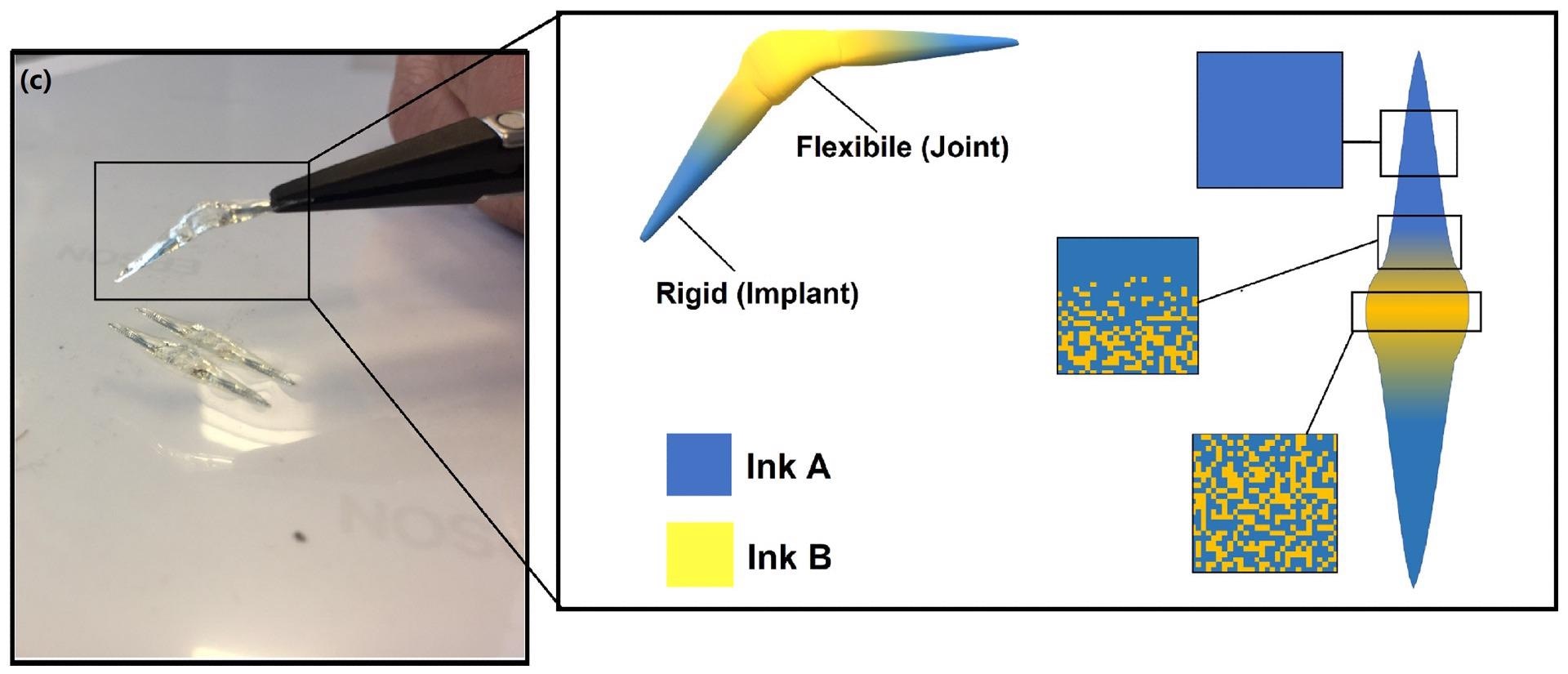Jun 11 2021
Researchers from the University of Nottingham have used a new 3D printing process to customize artificial body parts and other medical instruments with integrated functions. These functions provide better shape and durability, and at the same time, reduce the risk of bacterial infection.
 A bacteria-repelling artificial finger joint with customized strength distribution made with the multi-material 3D print process. Image Credit: University of Nottingham.
A bacteria-repelling artificial finger joint with customized strength distribution made with the multi-material 3D print process. Image Credit: University of Nottingham.
Most mass-produced medical devices fail to completely meet the unique and complex needs of their users. Similarly, single-material 3D printing methods have design limitations that cannot produce a bespoke device with multiple biological or mechanical functions. But for the first time, using a computer-aided, multi-material 3D-print technique, we demonstrate it is possible to combine complex functions within one customised healthcare device to enhance patient wellbeing.
Dr Yinfeng He, Study Lead, Centre for Additive Manufacturing
Scientists believe that the novel design process can be used to 3D-print all kinds of medical devices that require customizable functions and shapes. For instance, the 3D-printing technique could be adapted to produce a one-piece highly-bespoke prosthetic joint or limb to substitute a lost limb or finger that can fit the patient perfectly, and thus enhance their level of comfort and the durability of the prosthetic.
The technique could also be used to print customized pills that contain multiple drugs — called polypills — improvised to discharge into the body in a pre-designed therapeutic sequence.
In the meantime, the aging population is growing worldwide, resulting in an even greater demand for medical devices in the days to come. The new technique can help improve the health and wellbeing of the aging population and thus reduce the financial burden on the government.
How it Works
In this study, the researchers used a computer algorithm to develop and produce — pixel by pixel — 3D-printed objects composed of two polymer materials of varying stiffness that also prevents the accumulation of bacterial biofilm. By improving the stiffness in this manner, the researchers were able to achieve custom-sized and custom-shaped components that deliver the required strength and flexibility.
For example, existing artificial finger joint replacements use both silicone and metal components that provide the wearer with a standardized level of dexterity while being sufficiently rigid to be implanted into the bone.
In this new study, however, the researchers were able to 3D-print a finger joint and provided both these requirements in a single device. At the same time, they were able to customize the strength and size of this device to address the individual requirements of patients.
Interestingly, with an additional level of design control, the researchers successfully carried out their new 3D-printing technique using multi-materials that are intrinsically bio-functional and resistant to bacteria. These materials could be implanted to fight infections (which can emerge both during and after surgery) without using any additional antibiotic drugs.
The researchers also used a novel high-resolution characterization method, called 3D orbitSIMS, to 3D-map the chemistry of the print structures and also to check the bonding between them throughout the part. This demonstrated that — at very small scales — both these materials were intermingling at their interfaces, a sign of excellent bonding which indicates that the better device is less likely to break.
The research work was performed by the Centre for Additive Manufacturing (CfAM) and financially supported by the Engineering and Physical Sciences Research Council. The complete results have been published in the Advanced Science journal in an article titled, “Exploiting generative design for 3D printing of bacterial biofilm resistant composite devices.”
Before commercializing the new method, the team has planned to extend its potential applications by testing it on more sophisticated materials that have additional functionalities, like regulating immune responses and supporting the attachment of stem cells.
Journal Reference:
He, Y., et al. (2021) Exploiting Generative Design for 3D Printing of Bacterial Biofilm Resistant Composite Devices. Advanced Science. doi.org/10.1002/advs.202100249.